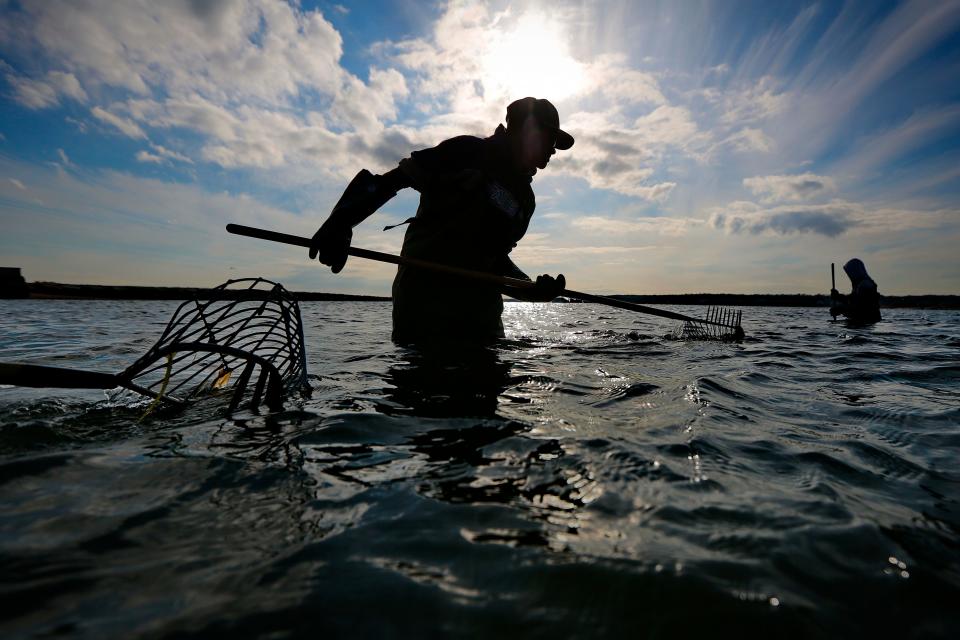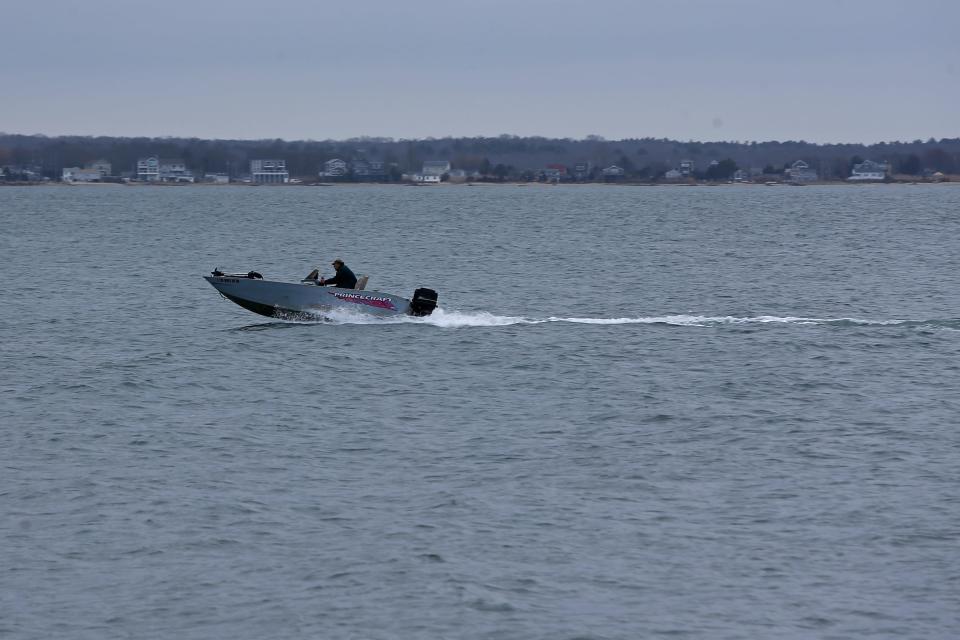How did Buzzards Bay get its name? Explore the history of a mistake that stuck.
Buzzards Bay has had many different names, but it’s the name that stuck.
It was all just one big mistake.
But really, why Buzzards Bay?
As the story goes, fishermen and other explorers saw “all the little buzzards,” not knowing that they were actually osprey, the fish-eating bird of prey also called a sea hawk, river hawk and fish hawk, and named it Buzzards Bay.
The osprey almost became extinct due to the use of DDT, an insecticide infamous for its environmental impacts in the 1980s, but has made a remarkable recovery, according to Buzzards Bay Coalition President Mark Rasmussen.
Return to nature: Tidal marsh restoration underway on Fairhaven side of New Bedford Harbor coastline

What other names has Buzzards Bay had?
Other names are perhaps better suited to its character. Osprey Bay, maybe?
The Wampanoag called the bay Poughkeeste, which means “where the little waters enter the big waters” in its Anglicized version, because it’s where the bay opens out into the Atlantic Ocean, and it is very much shaped as a funnel, according to Rasmussen.
Other versions have referred to it as Manomet Bay after another Wampanoag word, and as Monument Bay, another Anglicized name. The early name for the Cape Cod Canal was the Monument River, he said.
“At the very head of the bay, the little Monument River was the source in Wampanoag Manomet, so the bay that it emptied into at the time it was a little stream was often shown on early maps as Manomet Bay, but it has not been seen for hundreds of years on charts,” he said.

Some historians have questioned if Buzzards Bay was a place called Strongford in the Norse saga about the discovery of Greenland called the Vineland Saga, he said. In it, there’s a so-called Bay of Currents with openings between islands with strong currents that could be the strong currents between the Elizabeth Islands in Buzzards Bay. It’s one claim, although Rasmussen calls it “sketchy.”
Bartholomew Gosnold, who was credited with discovering Buzzards Bay in 1602 and naming it Gosnold’s Hope, presented it as such to Queen Elizabeth on the record. He also named the Elizabethan Islands and Martha’s Vineyard.
In his writings he reflects upon entering “one of the stateliest sounds that ever I was in. This we called 'Gosnold’s Hope'”
Fantastic beasts and where to find them: Great white sharks in Buzzards Bay? Not many, but they're out there
What are some of the bay's characteristics?
Buzzards Bay is shallow with an average depth of less than 30 feet. Rasmussen likes to say that a typical two-story house in your neighborhood would stick out of Buzzards Bay. Occasionally pilot whales have entered Buzzards Bay.
Seals have made a big comeback since the ban on killing seals in the 1960s and the 1972 Marine Mammal Protection Act. They can be seen mostly around the outer Elizabeth Islands, but can also be seen on rocky points in Dartmouth, Fairhaven and Mattapoisett during the winter.
Buzzards Bay is unique because, since 1896, commercial net fishing has been banned when former President Grover Cleveland under an act of Congress made it part of an effort to preserve the nursing grounds more than 100 years ago.
“We house the largest, most successful commercial fishing fleet in the country, but none of them fish in the bay,” Rasmussen said. “The come home through the bay, they leave through Buzzards Bay, but they catch fish offshore.”
Shellfishing in Buzzards Bay for quahogs, oysters and bay scallops has been important to the economy, but unfortunately the bay scallop population, historically a signature species, is way down due to pollution, except in Westport, and the eel grass is gone. The quahogs remain because they are tougher.
Unfortunately, he said, lobsters have moved out of Buzzards Bay in the last 10 years due to warmer water and disease so that they are more prevalent north of Cape Cod.
A relatively new phenomenon is the appearance of schools of common dolphins in the bay along with harbor porpoises, large leatherback turtles and sea turtles in the summer.
The bay became famous in the 1890s for its sportfishing and continues to be known as fishing ground for striped bass and bluefish, especially near Cuttyhunk, following herring and other foundation fish.
How does Buzzards Bay remain among the healthiest bays?
Buzzards Bay on a comparative scale has always been among the healthiest estuaries in the northeast along the Interstate 95 corridor, Rasmussen said. Only it and Casco Bay have maintained its health and water quality despite the pressures on the bay, including fighting to improve the water quality.
He said the secret ingredient is the low level of urbanization, with just 76% of the bay watershed still forested while keeping the water cooler and filtering pollution.
What is the Buzzards Bay Coalition?
The Coalition, a membership-supported nonprofit organization, has been working to protect clean water throughout the bay system with its 21 communities in an area that also includes the Elizabeth Islands and Vineyard Sound.
It focuses on four areas, including bay science, or collecting the data to understand how the bay is doing; land conservation and restoration, or actively preserving forest, wetlands and streams to support a healthy bay; active restoration such as dam removal and restoring degraded wetlands; and advocacy through public outreach.
In 1987, residents from all the Buzzards Bay towns, cranberry growers, marina owners and the Woods Hole Oceanographic Institute united to help the federal government create the first protection plan for Buzzards Bay, and the Buzzards Bay Coalition was created.
Standard-Times staff writer Kathryn Gallerani can be reached at kgallerani@gannett.com. Follow her on Twitter: @kgallreporter. Support local journalism by purchasing a digital or print subscription to The Standard-Times today.
This article originally appeared on Standard-Times: How Buzzards Bay got its name: SouthCoast Mass. history

